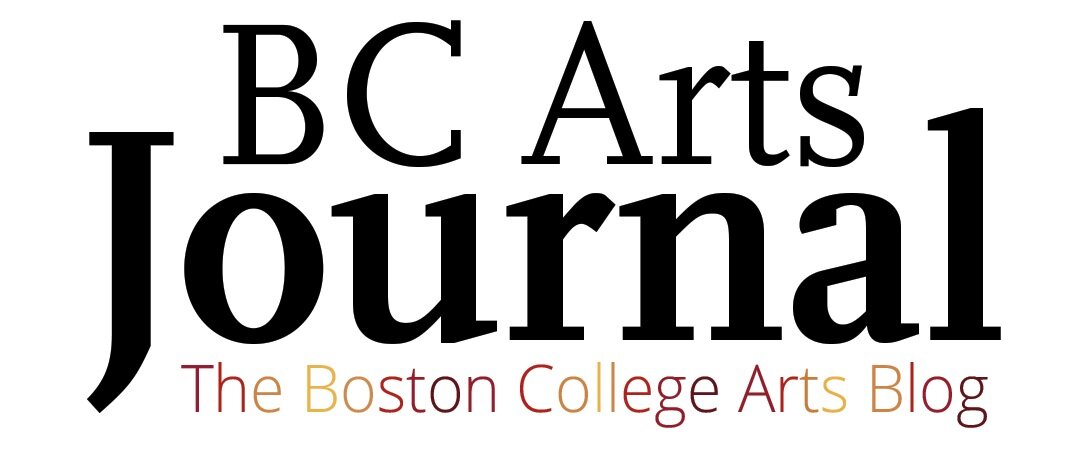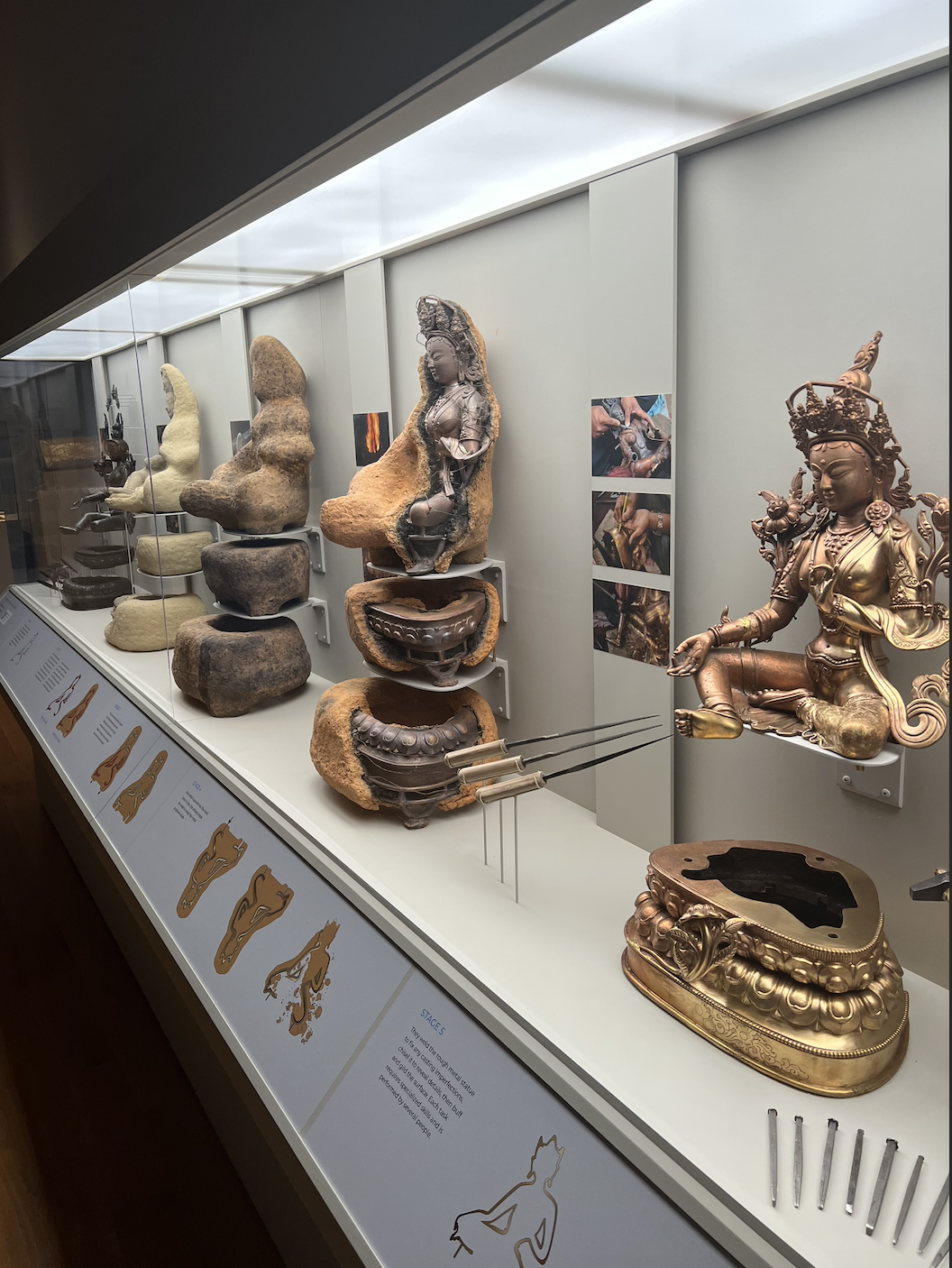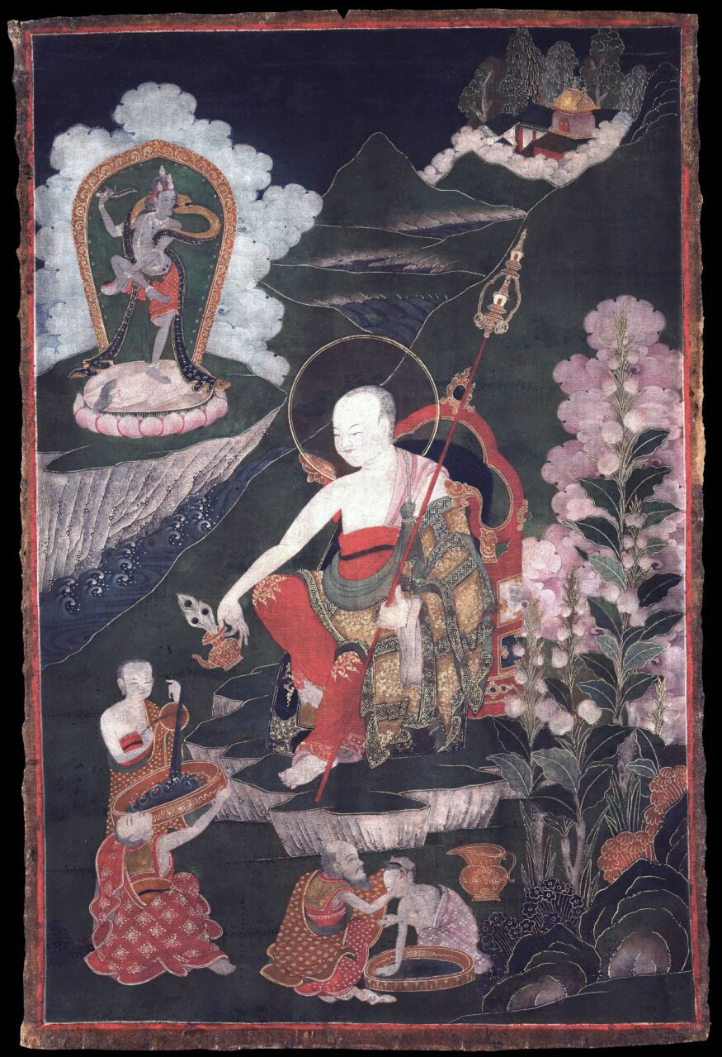Gateway to Himalayan Art: Exhibition Review
‘Medicine Buddha Palace’
Lobsang Drubjam Tsering
Interactive lost-wax casting display at the McMullen
From September to December 10, the McMullen Museum of Art is hosting a special traveling exhibition entitled “Gateway to Himalayan Art.” The exhibition is indeed a thoroughly explorative gateway into a complex realm of art and culture: the Himalayan region of India, Nepal, Bhutan, and Tibet. The exhibition reveals the intertwined layers of religion, ritual, and tradition within this broader geographic context. It is a marvelous display of the iconographies, artistic processes, and symbolic elements found within Himalayan art, with the collection containing works from as early as the 13th century. Housed within three exhibition areas of the museum, the collection boasts a wide array of artifacts, ranging in material from cloth compositions to metalwork pieces to paper works.
The vibrancy of the art alone is enough to entice one into the exhibition hall—if not that, then the incredible swirling forms, beastly and ferocious deities, or the tranquil golden Buddha statues. Thematic similarities run through the majority of the artworks, with symbolic presences in dancing, standing, or hunting poses or assuming certain gestures, as well as many implements unique to this visual culture. Compositions found on both cloth and paper are strikingly similar in format, with a central deity surrounded in all four corners by an entourage, and the piece entirely detailed with intricate lines, figures, and colors. Each recurring figure within these artworks, such as buddhas, bodhisattvas, deities, and even various themes like anatomy and existence, are explained in thorough nature within the adjacent plaques.
“Arhat Nagasena”
Tibet, 18th century
One of the most fascinating things to see--especially outside of a studio art context--is the displays which demonstrate the ways in which these types of art are produced, from statues to woodblocks to repoussé statuettes. The second room in the main hall, entitled “Materials and Technologies”, has encased the tools, artistic materials, and step-by-step walkthroughs of several examples of methods. The most extensively explained is that of lost wax casting, which is a complicated endeavor to create metal statues which involves fire, molding, and molten metal. Bringing to light with great detail how the pieces within the greater exhibition were made during this time by artists and artisans reveals not only the technologies utilized by this culture, but improves our modern understanding of past methodologies and their specialization.
“Gateway to Himalayan Art” is a visual roller coaster ride--religious elements are paired with cultural references and values, flanked by swirling, exciting visual qualities that evoke deep emotion and hint at the rich tapestry of storytelling built deep into this culture.
Written and Photographed by Margot Striegel ‘24



